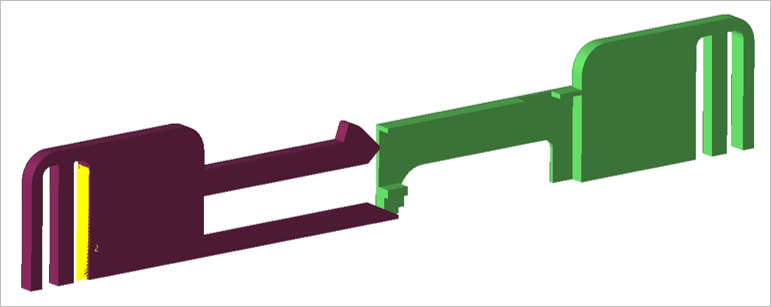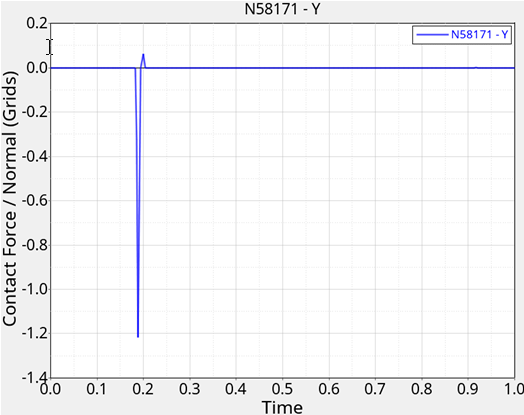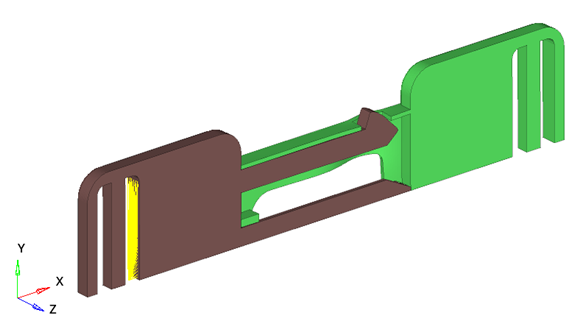OS-E: 0160 Nonlinear Static Analysis of Snap Fit Assembly Using Continuous Sliding
Demonstrates the effect of continuous sliding in Nonlinear Static (large displacement) Analysis.

Figure 1. FE Model
Model Files
Refer to Access the Model Files to download the required model file(s).
The model file used in this example includes:
CONSLI_Sliding.fem
Model Description
- FE Model
- Elements Types
- CTETRA
- MAT1
- Young’s Modulus
- 5E3 MPa
- Poisson's Ratio
- 0.3
- Density
- 1.1E-9
Results

Figure 2. Contact Force (Y) for Node 58171

Figure 3. Deformed State of the Snap Fit Assembly

Figure 4. Element Stress Plot of the Snap Fit Assembly